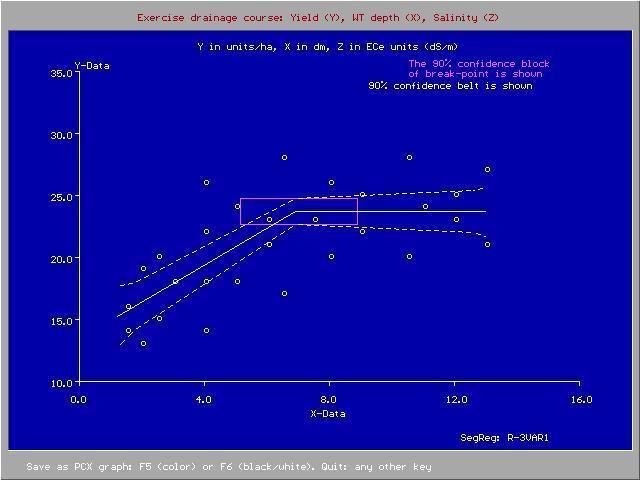 | ||
A drainage equation is an equation describing the relation between depth and spacing of parallel subsurface drains, depth of the watertable, depth and hydraulic conductivity of the soils. It is used in drainage design.
Contents
A well known steady-state drainage equation is the Hooghoudt drain spacing equation. Its original publication is in Dutch. The equation was introduced in the USA by van Schilfgaarde.
Hooghoudt's equation
Hooghoudt's equation can be written as:.
Q L2 = 8 Kb d (Di - Dd) (Dd - Dw) + 4 Ka (Dd - Dw)2where:
Steady (equilibrium) state condition
In steady state, the level of the water table remains constant and the discharge rate (Q) equals the rate of groundwater recharge (R), i.e. the amount of water entering the groundwater through the watertable per unit of time. By considering a long-term (e.g. seasonal) average depth of the water table (Dw) in combination with the long-term average recharge rate (R), the net storage of water in that period of time is negligibly small and the steady state condition is satisfied: one obtains a dynamic equilibrium.
Derivation of the equation
For the derivation of the equation Hooghoudt used the law of Darcy, the summation of circular potential functions and, for the determination of the influence of the impermeable layer, de method of mirror images and superposition.
Hooghoudt published tables for the determination of the equivalent depth (d), because the function (F) in d = F (L,Di-Dd,r) consists of long series of terms.
Determining:
the design drain spacing (L) can be found from the equation in dependence of the drain depth (Dd) and drain radius (r).
Drainage criteria
One would not want the water table to be too shallow to avoid crop yield depression nor too deep to avoid drought conditions. This is a subject of drainage research. The figure shows that a seasonal average depth of the water table shallower than 70 cm causes a yield depression
The figure was made with the SegReg program for segmented regression.
Equivalent depth
In 1991 a closed-form expression was developed for the equivalent depth (d) that can replace the Hooghoudt tables:
d = πL / 8 { ln(L/πr) + F(x) }where:
Extended use
Theoretically, Hooghoudt's equation can also be used for sloping land. The theory on drainage of sloping land is corroborated by the results of sand tank experiments. In addition, the entrance resistance encountered by the water upon entering the drains can be accounted for.
Amplification
The drainage formula can be amplified to account for (see figure on the right):
Computer program
The amplified drainage equation uses an hydraulic equivalent of Joule's law in electricity.
It is in the form of a differential equation that cannot be solved analytically (i.e. in a closed form) but the solution requires a numerical method for which a computer program is indispensable.
The availability of a computer program also helps in quickly assessing various alternatives and performing a sensitivity analysis.
The blue figure shows an example of results of a computer aided calculation with the amplified drainage equation using the EnDrain program. It shows that incorporation of the incoming energy associated with the recharge leads to a somewhat deeper water table.
